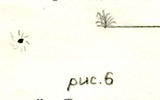| ID | #1710946114 |
| Added | Wed, 20/03/2024 |
| Author | July N. |
| Sources | |
| Phenomena | |
| Status | Fact
|
Initial data
Katya Mendeleeva - (16 years old) - graduate of 171 Moscow schools, then an applicant, now (April 82) - a student of the Chemical Faculty of Moscow State University.
Kuznetsov Ivan- (17 years old) - a graduate of 171 schools, now a student of the Moscow Art Institute. Mendeleev.
Kuznetsov Vova - (10 years old)- Vanya's younger brother, graduated from the third grade.
Ivan and everyone else have been interested in astronomy since March 1981, by the summer they had a homemade 20x magnification telescope assembled from a high-power telephoto lens (F = 30 cm) and an eyepiece of two lenses, a 6x tube based on the Jupiter-1Z lens and theatrical binoculars. We observed the starry sky, acquired a certain observation skill, decently navigated the starry sky, photographed stars and planets.
These observations and sketches were recorded on the days of observations in a notebook, from which they were later reprinted. Moscow summer time is given everywhere.
June 28, 1981, 22-30.
From the balcony, Ivan noticed object-3. Through the telescope, it looked double, without a cloud. It was observed in almost the same direction as the previous 1 and 2 (Fig.6).
At 23-05, its disintegration began.
First, the first and strongest part separated and moved "up", then the remaining part broke up into many small ones, which went "down" with acceleration. The telescope is assembled according to the Kepler system, i.e. the image is inverted, in the descriptions and in the drawings (which are in circles) everything is depicted as it was seen through a telescope. So, in fact, small "fragments" flew OVERHEAD with acceleration!!!. (Figure 7)
At 23-02, the visibility of the object stopped, and the stars were not yet visible.
Generalizations:
It should be noted that we have never been able to observe the appearance of objects themselves, we noticed them when they were already calmly hanging in the sky. How they appeared is anyone's guess.
We did not photograph the objects. Due to the rapid and unpredictable movement of objects, as well as the fact that the background of the sky was too bright, photographing was pointless. In addition, there was only one long-focus lens and we preferred to observe visually with a large magnification rather than receive (or not receive) photographs in which the size of the objects would be commensurate with the size of the grains on the film, or even more likely, the images of the objects would be smeared on half a frame.
Attention is drawn to the similarity in the behavior of objects, approximately the same observation time.
According to observations from points quite far from each other, it can be argued that the objects were at an altitude of about 10 kilometers, but it is very difficult to establish on the map the point above which it all happened.
Brightness, rapid movement in different directions, the presence of a cloud, a satellite and, finally, disintegration, followed by accelerated flight of the "fragments" upwards and a gradual decrease in their brightness until they completely merge with the background of a bright sky, indicate that the objects were unlikely to be an airplane, helicopter, balloon, rocket, or any other a celestial body (a star, comet, meteorite, and even more so a planet, such as Venus) because planets cannot be observed so far from the ecliptic, especially in a northerly direction.
Thus, their origin must be explained either by an unknown terrestrial object or phenomenon, or by an unknown object altogether.
Hypotheses
Investigation
Resume
Log in or register to post comments




